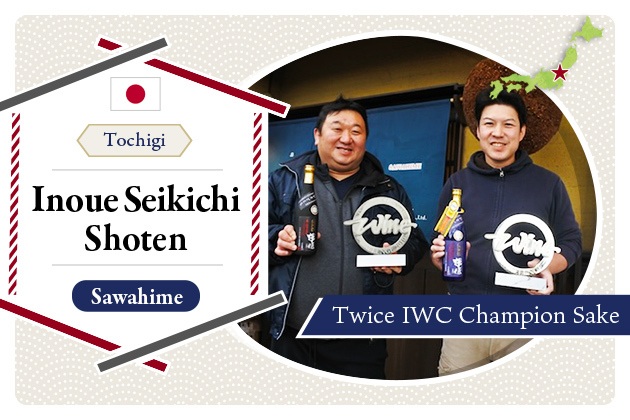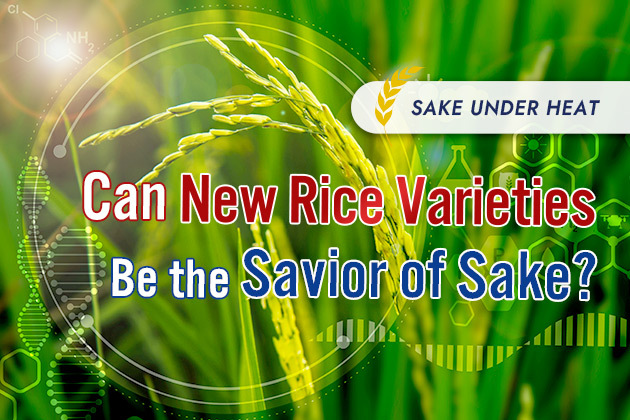
2023.11
22
What is Yamadanishiki? - The Genealogy of the “King of Sake Rice”
Anyone with even a passing interest in sake will soon come across the term Yamadanishiki. There are more than 100 varieties of sake rice, of which Yamadanishiki is the most well-known and representative.
Why is Yamadanishiki so much more famous than other sake rice varieties? In this article, we will explain the characteristics, genealogy, and production area of Yamadanishiki.
What is Yamadanishiki?
Yamadanishiki, called the "king of sake rice," is a representative variety of rice suitable for sake brewing. Originally created in 1936 at the Hyogo Prefectural Agricultural Experiment Station, it is used by many sake breweries throughout Japan, as well as famous brands such as Dassai and Hakutsuru.
Yamadanishiki is unique among sake rice in that the shinpaku (white core part of the rice) is easily visible, large, and has a good shape. The shinpaku is the area in the center of the rice grain where starch gathers and appears cloudy white in color. Thanks to this, koji mold is easily penetrated to the center of the rice during koji making, which makes Yamadanishiki particularly suitable for producing good koji.
Yamadanishiki also meets all the requirements of a suitable rice for sake brewing: it has few extra components such as fat and protein, large grains that do not break easily during polishing, and high water absorbency. As a result, sake made with Yamadanishiki tends to have a well-balanced flavor with little unwanted taste. It is highly valued because of its ability to produce sake that reflects the intentions of the brewer.
The Annual Japan Sake Awards has been held for more than 100 years as a professional evaluation of sake breweries' technical skills. Many sake breweries still use Yamadanishiki as the raw material for entry in the awards.
In the late 1980s and 1990s, the term "YK35" was widely used by sake brewers to describe the characteristics of sake suitable for this sake competition; Y for Yamadanishiki, K for Kumamoto Yeast (Kyokai No. 9 yeast) from the Kumamoto Sake Brewing Research Institute famous for its “Koro” brand, and 35 for sake made with 35% polishing. This term indicates that Yamadanishiki is an ideal variety for producing sake that wins gold medals.
Genealogy of Yamadanishiki
Yamadanishiki was created in 1923 through artificial crossbreeding between Yamadaho and Tankan Wataribune. Afterwards, selection was carried out through region-adaptability tests and variety comparison tests, finally leading to the name Yamadanishiki in 1936. Producers in various regions continued to improve sake rice varieties, launching new varieties, but Yamadanishiki has been called the king of sake rice for more than 50 years.
Yamadaho, the mother of Yamadanishiki, has a long history with its existence being confirmed as early as the Meiji era (1868-1912). Yamadaho has been a favorite of sake brewers since that time, but there are various theories as to its origin:
- Yamada Seizaburo discovered it in the present Higashi-yasuda, Naka-ward, Taka-machi, Taka-gun, Hyogo Prefecture, and named it after his own family name.
- It was grown by Shinzaburo Tanaka of the current Yoshikawa-cho, Miki City, Hyogo Prefecture, who brought it back from his pilgrimage to Ise, and named after Ise Yamada, which is dedicated to Toyoke Ookami, the god of rice.
- It was grown from seeds brought back from current Ibaraki City, Osaka by Kanbei Higashida of the current Yamada-cho, Kita-ku, Kobe City, Hyogo Prefecture, and named after the village name "Yamada-mura" at that time.
Currently, theory 1 is considered the most plausible.
The father, Tankan Wataribune, is not in use today, and is a highly enigmatic variety. As with another variety used under the name Wataribune, its roots are believed to be in Omachi.
Main production area
Hyogo
Yamadanishiki is grown mainly in Hyogo Prefecture. The climate, topography, and geology of the prefecture are well suited for sake rice production, resulting in about 30% of all Yamadanishiki production in Japan coming from Hyogo Prefecture. The most representative area is the northern part of the Rokko Mountains, where the large temperature difference between day and night and the clay soil provide the conditions for producing high quality Yamadanishiki.
Yamadanishiki commands a higher price than table rice, but many farmers avoid growing it because of the difficulty of maintaining its quality. Only Hyogo Prefecture produces Toku A (Special A) Yamadanishiki, because its sake breweries and rice growers have long worked together to improve the quality of the rice.
Yamaguchi
Yamaguchi Prefecture is the second largest producer of Yamadanishiki after Hyogo Prefecture. Asahi Shuzo, which brews the famous Yamadanishiki sake Dassai, is located in Iwakuni City, Yamaguchi Prefecture. Even in the 2010s, when sake production was once in decline nationwide, Yamaguchi Prefecture was increasing its production and shipments. It has cultivated overseas markets to Asia, Europe, and the United States, and has increased its exports.
In addition, the Yamada Nishiki Project, a contest to determine the best Yamadanishiki, is held under the leadership of Asahi Shuzo.
Tochigi
Tochigi Prefecture is also a major producer of Yamadanishiki; in 2019, Yamadanishiki grown by farmers in Tochigi Prefecture won the Yamada Nishiki Project. Today, about 40 farmers in Tochigi Prefecture belong to the Yamadanishiki Cultivation Institute, which focuses on growing high-quality sake rice.
Saga
In Saga Prefecture, the Gomachida Sake Brewery in Ureshino City, which brews Azumaichi brand, took up the challenge of growing its own Yamadanishiki in 1988. Despite the different climatic and geological conditions from those in mainland Japan, the brewery was able to improve its yield and quality through various innovations, and even won a gold medal at the 1990 Annual Japan Sake Awards for sake made with locally produced Yamadanishiki.
As a result of these efforts over a long period of time, Yamadanishiki cultivation is now spreading throughout Saga Prefecture, and in 2018 it was registered as a prefecture-endorsed variety. The entire prefecture is now involved in efforts to improve cultivation techniques.
Grades of Yamadanishiki
Sake rice is graded as tokujo (extra fine), tokuto (special), itto (first), nito (second) and santo (third) grade. These are classified according to the percentage of well-rounded rice contained in a certain amount of brown rice, and the percentage of unusable rice, such as colored or damaged grains.
In the case of Yamadanishiki, in addition to this grading system, a Toku A (Special A) district standard is added. Toku A District is a term used to describe a specific area suitable for growing Yamadanishiki. It is characterized by a large daily range in summer temperatures and fertile soil rich in the nutrients necessary for sake rice. Examples include Miki City (Yoshikawa-cho and Kuchiyoshikawa-cho) and Kato-shi (former Tojo-cho and eastern part of Yashiro-cho) in the Banshu area, the southeastern part of Hyogo Prefecture.
Summary
Yamadanishiki is one of the varieties of rice suitable for sake brewing, and is particularly suited for sake competitions due to its well-balanced flavor. And the quality of sake rice is greatly influenced by climate and soil. The most productive region for Yamadanishiki is Hyogo Prefecture, but the rice produced in Yamaguchi and Tochigi Prefectures is also known for its high quality. When drinking sake made with Yamadanishiki, try it while appreciating the different flavors produced in different regions and brands.
Knowing the characteristics of sake rice will make it easier to find the sake that best suits your tastes. Take a look at our other articles explaining other varieties.
*Translation support: Sake Brewers Association of North America
References (All in Japanese):
・Hyogo Yamadanishiki 80th Anniversary Booklet, Hyogo Prefecture, Hyogo Sake Rice Promotion Association, JA Zen-Noh Hyogo
・Yamadanishiki produced in Hyogo - Why it continues to be the "king of sake rice", Naoko Katsunuma, Furusato Hyogo #133. 2018
・The memory of sake rice, Yasugoro Kogure, Journal of the Brewing Society of Japan 63-7. 1968
・Sake Rice of Hyogo: 50th Anniversary Commemorative Magazine, Hyogo Sake Rice Promotion Association, 2000
Pickup Articles
2019.01.18
2019.01.25
Trending Articles
Popular Articles
Recent Articles













